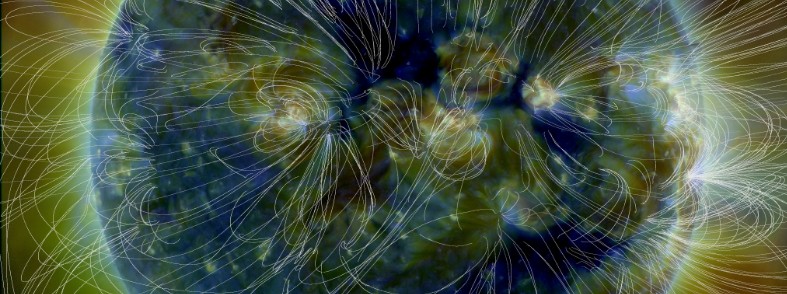Negative polarity CH HSS drives isolated periods of geomagnetic storming

Solar wind parameters reflected a brief enhancement associated with the arrival of a co-rotating interaction region (CIR) and subsequent negative polarity coronal hole high speed stream (CH HSS) late June 22, 2016.
A gradual increase in solar wind speeds began after 18:00 UTC, eventually reaching a maximum speed of 469 km/s.
Shortly after 03:00 UTC on June 23, wind speed quickly decreased to average near 360 km/s and remained at those levels through 12:30 UTC.
Total field strength values increased to a peak of 13 nT before returning to average around 7 nT. The Bz component fluctuated between +9 nT and -6 nT until approximately 04:00 UTC when it stabilized near 6 nT. The phi angle remained in a predominantly negative orientation, SWPC said.
Geomagnetic K-index of 5 (G1 Minor geomagnetic storm) was reached at 20:56 UTC.


Image credit: NOAA/SWPC

Image credit: NASA SDO/AIA 211, 193, 171 – June 21, 2016
Explaining the plot below, SWPC said earlier this isolated period of G1-Minor geomagnetic storming is not fully understood because wind speeds were below 400 km/s and there was no significant negative Bz observed in the solar wind data.
"Forecasters believe this to be a rare sub-storm related to elevated density and a sustained negative By component of the interplanetary magnetic field. The yellow line on the ACE data shows the Bz component and the white line shows the By component. During the geomagnetic activity, Bz was clearly positive while By was negative for an extended period of time."

Solar wind parameters are expected to continue to reflect CH HSS influence, which should persist through June 24 and 25.
Solar wind speeds are expected to see maximum values near 600 km/s on Friday, June 24.
The geomagnetic field is expected to be at quiet to unsettled levels, with isolated periods of active conditions, on June 23 and 24 as negative polarity coronal hole influence continues. A decreased activity to mostly unsettled levels, as CH conditions begin to wane, is expected by June 25.
Featured image credit: NASA/SDO AIA

Commenting rules and guidelines
We value the thoughts and opinions of our readers and welcome healthy discussions on our website. In order to maintain a respectful and positive community, we ask that all commenters follow these rules:
We reserve the right to remove any comments that violate these rules. By commenting on our website, you agree to abide by these guidelines. Thank you for helping to create a positive and welcoming environment for all.